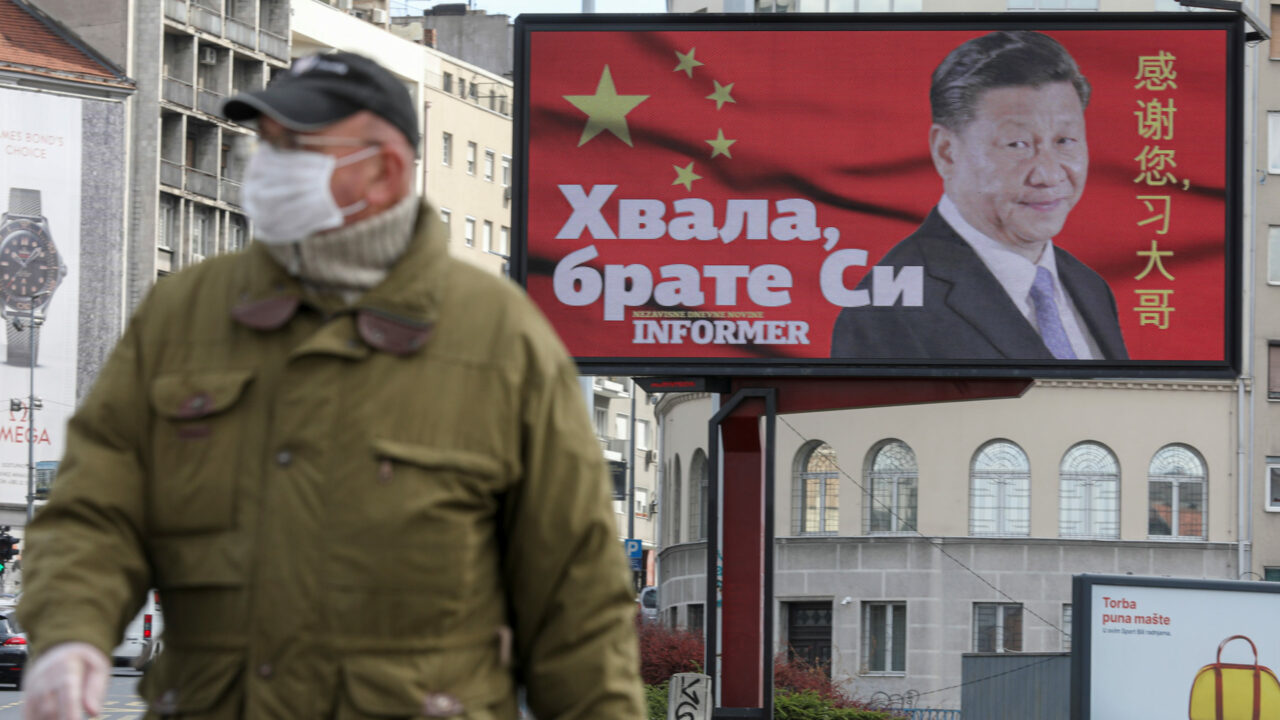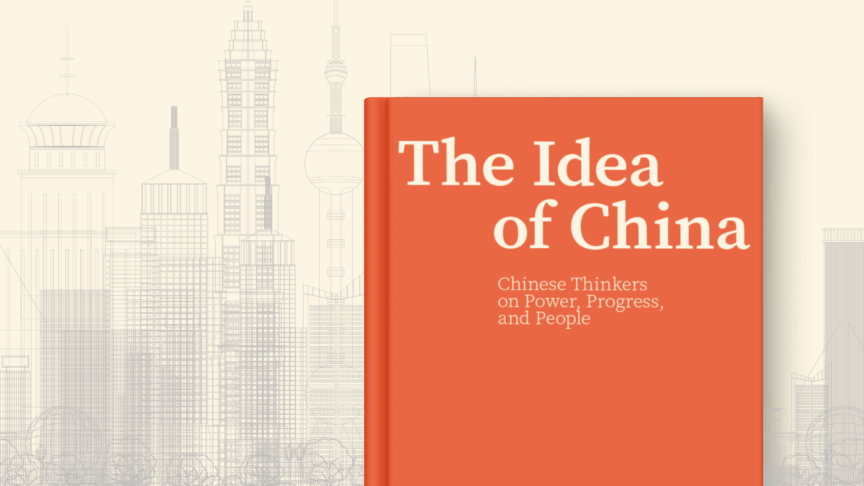Beijing’s megaphone: The return of party propaganda in south-eastern Europe
Within less than a decade, China has significantly expanded its media presence in south-eastern Europe. The country is increasingly well-positioned to amplify its voice, disseminate imagery, and convey its narratives
There was a time when citizens of what were then communist countries had to endure an endless deluge of ideological rhetoric and imagery. Stale, omnidirectional, and relentless, this propaganda flowed through the ether from the frontpages and the sole TV channel. Boastful commentary on five-year plans, grand political goals, and the speeches of party leaders dominated the media landscape. Dismantling the infrastructure that created this information environment was central to the transition away from communism.
It is all the more surprising, then, that party rhetoric is making a comeback in some of these countries. Only, this time, it comes from a different communist party – that of the People’s Republic of China.
For several years, one of the most popular news portals in Bulgaria, 24 Hours, has hosted a segment devoted to the Middle Kingdom entitled ‘Focus China’. It prescribes a daily dosage of unedited content and imagery supplied by Chinese media and institutional sources on matters ranging from macroeconomic data and projects to the Belt and Road Initiative (BRI), to Beijing’s position on various international issues. A particular highlight is the voluminous speeches of the president and secretary-general of the Chinese Communist Party, Xi Jinping, which are reproduced in full. Even prominent businessman Jack Ma featured on 24 Hours, before his recent disappearance from public view.
One would be hard-pressed to identify any ideological affinity in this new media partnership. Rather, relations are structured around a financial contract with China Radio International. More interestingly, the Chinese actors behind the arrangement spent considerable time exploring other possible media link-ups in Bulgaria before finally settling on their current partner.
Such endeavours are increasingly common across south-eastern Europe. Analysts have often viewed these efforts as nascent, ad hoc, unrelated, and – ultimately – lacking in scope, intent, and ambition.
Yet, as shown in recent research by the European Council on Foreign Relations (supported by the regional media programme of the Konrad Adenauer Foundation), this is no longer the case. In reality, Chinese actors are constructing an ecosystem of interested and engaged media-related partners across the region. This emerging network has three basic parts. The first and least surprising one relies on communist legacy contacts and relationships dating back decades. The members of this network are old hands in Albania, Croatia, Serbia, and Bulgaria who have extensive contacts and experience across the local media sphere. In other cases, legacy relations are more institutional, involving long-standing ties to local journalists’ associations, such as those in Serbia and Bulgaria.
China is gradually expanding its range of content providers in the region as it supplies information through the Belt and Road News Network.
The second part is based on more formal institutional interactions and access between China and south-eastern European states. It stems from the myriad opportunities for cooperation created by bilateral and BRI-related mechanisms and projects, extending to bodies such as information agencies, ministerial departments, and organisations representing various industries. For instance, some of these bodies in Bosnia, North Macedonia, Serbia, and Bulgaria have signed extensive media cooperation agreements on various types of content with Chinese state information organisations such as Xinhua. China is gradually expanding its range of content providers in the region as it supplies information through the Belt and Road News Network. And an increasing number of officials in culture and education ministries are engaged in cooperation related to the BRI. In Bulgaria, Serbia, and Bosnia, there has even been rising interaction with China at the level of state institutions for regulating the media.
Yet it is the third part of this emerging ecosystem that is most indicative of China’s strategy in south-eastern Europe. This part is a rather fluid but increasingly integrated network of new actors who perform a variety of media-related functions and have a sustained, transactional interest in aligning with their Chinese partners. The group is quite diverse. For instance, students returning to North Macedonia, Bosnia, and Croatia from China are positioning to enter institutions such as universities and ministries, slowly gaining prominence in the media as commentators and experts. Private media companies in Bulgaria, Serbia, and Croatia are ever more active in linking up with and offering access to Chinese actors in relation to publicity, content, and advertising. Freelance media entrepreneurs in Bulgaria, Croatia, and Serbia offer consultancy services and project cooperation to Chinese institutions.
Notably, the local Chinese diaspora is also slowly entering the media sphere – as illustrated by the activities of Bulgarian businessman Zheng Zhong. He regularly appears on Bulgaria’s main TV channels to provide a pro-Beijing take on Chinese affairs. His Council on Economic and Diplomatic Relations is focused on BRI-related work, providing a platform for publicity and a media presence. Yet another new form of engagement and cooperation with local media actors occurs through the work of the Chinese Southeast European Business Association, which has public relations and lobbying functions. The organisation represents Chinese interests, provides content, and supports pro-Beijing publicity efforts through various means. Its activities are difficult to map, but local analysts have studied its work in Croatia. These activities have included the provision of publicity for Chinese projects, the generation of content for local media outlets, and the coordination of messaging.
Bosnia and Herzegovina provides perhaps the best example of the modus operandi of this third group of pro-Beijing actors. The Centre for Promotion and Development of the BRI, based in Sarajevo, acts as a hub for the generation and placement of content. And the organisation is creating cooperation frameworks with other actors to further strengthen its position. It is staffed by former journalists who have extensive experience, and hosts a website entirely based on Chinese sources. The centre has contractual relations with the local Chinese embassy and increasingly works in coordination with institutions such as Bosnian-Chinese Friendship Association and the Confucius Institute at Banja Luka University. It is ever more engaged in joint projects with numerous other universities and policy institutes, organising public events and generating content for the media.
Within less than a decade, China has significantly expanded its media presence in south-eastern Europe in terms of relationships, content, and infrastructure. The country began its ascent in the media from a low base, but is accelerating and on the cusp of acquiring real leverage over public opinion and representations of China in wider society. This is evidenced by pro-Beijing actors’ efforts to purchase media outlets in the region – as recently occurred with an unsuccessful attempt to acquire the main media group in Croatia. For example, one local newspaper in Slovenia is now under Chinese ownership. The acquisition of the influential Central European Media Enterprises by pro-Beijing Czech billionaire Petr Kellner could have significant consequences in the area. Overall, Beijing is increasingly well-positioned across the region to amplify its voice, disseminate imagery, and convey its narratives.
These developments will affect south-eastern European countries’ policy choices, political debates, and public perceptions in relation to China. Crucially, Beijing could use this newfound influence to block or marginalise what it deems to be misinformation about its most controversial projects, mainly those in infrastructure and metallurgy. A strengthened media presence will certainly help China frame various issues relating to areas such as debt, foreign policy, public health, and inter-state cooperation. And this enhanced structural position will aid the recruitment of more media foot-soldiers. All in all, geopolitical competition has arrived on the airwaves, TV screens, and smartphones of south-eastern Europe.
The European Council on Foreign Relations does not take collective positions. ECFR publications only represent the views of their individual authors.



